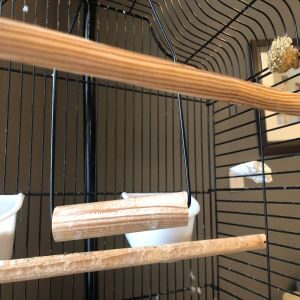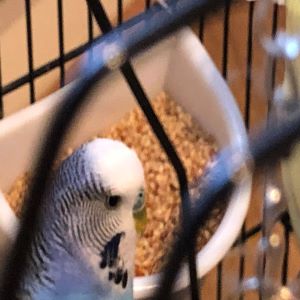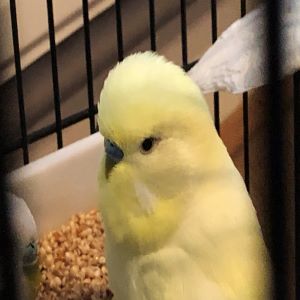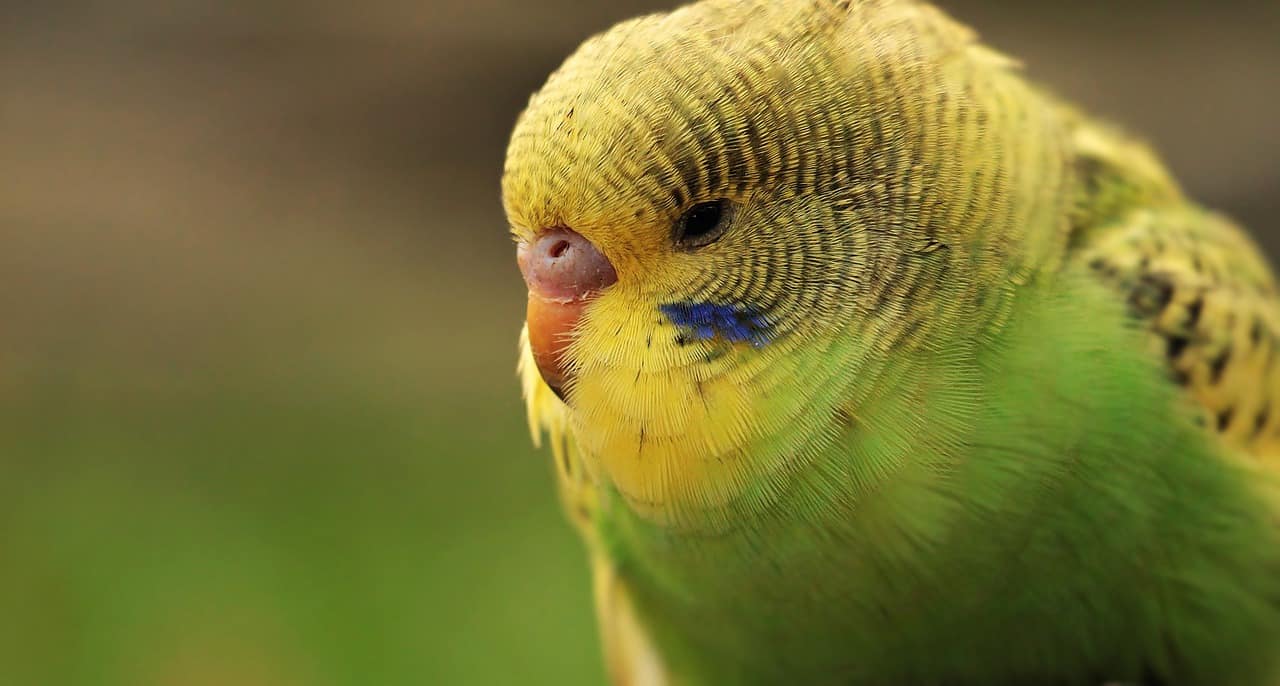On Google, there are some fascinating questions posed by budgie owners. Queries range from types of food to being attacked, microchipping, sex and health, and stress to personality issues. You can follow steps to create a stress-free environment and introduce new food to your budgie without it resulting in an upset tummy.
My partner has a blue and yellow budgie. Reg and Ronnie are two extremely talkative budgies who love the TV and there out of cage flight time. My partner and I live together soon, and I would like to introduce both budgies to new fresh food, ideas for out-of-cage enrichment and in-cage fun times. All of this sparked thoughts when researching on Google. Introducing the above can cost little and offer your budgies a rewarding life.
1: Why does my budgie keep attacking me?
One reason will be that when you bring a baby bird into the home and grow up in a caged environment, it will not know any different. Owning a bird from the nest offers successful training and enrichment opportunities. For example, returning to the cage by command or speech. You can tame a budgie at that age too.
Older birds used to a large aviary and freedom of flight will find it extremely hard to adjust to the confine of a small cage – the outcome can subsequently be aggression.
2: How can I tell if my budgie is depressed, stressed or scared?
Of course, an avian vet must make a clinical and physical assessment of your budgie. There are other factors to consider, such as depression or stress.
What are the signs of depression or stress in a budgie?
| Freezing or flight when faced with the possibility of danger | Fixed expression |
| Pulling out feathers and overall self-harming | Boredom |
| Flying into obstacles and constant distress calling | Aggression |
| Fixed expression | Hiding, quiet and hunched up |
| Tremors | Loss of appetite |
What are the signs of a frightened budgie?
| Panting | Wide eyes |
| Flapping wings and flying around their cage | Watery faeces |
It is important to observe your budgie for behaviour or personality changes. If you have serious concerns, don’t hesitate to contact an avian vet. Please give details of how your budgie is acting and information about its cage environment. The outcome may be simple changes.
3: How can I make a stress-free environment for my budgie?
Imagine being kept in a cage for hours and hours, bored and frustrated. Birds need enrichment, so how can we do this?
Foraging for food:
Let your budgie forage for food rather than rely on food given by you. Foraging will mimic natural wild behaviour and give brain stimulation and alleviate boredom.
| Place a few marbles on a plastic plate. Sprinkle millet, dehydrated fruit and seed between |
| Cut a cardboard loo roll tube in half and fill it with shredded paper and seed |
| Hide food around the cage |
| Put an Easter egg box in the cage. Sprinkle seed on the base, then let them hop in and out the window |
| Sprinkle food onto the artificial grass |
| Use foraging ideas in or out of their cage |
How to exercise your budgie and stimulate their brain:
Like humans, cats, and dogs, cognitive (dementia) may start because of the age of your budgie. But it is also vital to offer your budgie enrichment and keep its brain mentally stimulated. It is then possible that cognitive (dementia) may not occur or be limited.
| Your adopted budgie may be used to flight time outside of the cage. Allowing a little freedom will offer mental balance, a calmer mind, exercise and maintain the strength in the large muscle in their wings. |
| Teach recall or simple instructions. My partner recalls Reg and Ronnie back to their cage using a few simple words and tapping their cage. Oddly, Reggie, the blue budgie, responds first, then Ronnie follows into the cage. Interestingly they were adopted as adults, so they learnt the command easily. I tried it, and they eventually responded when I stepped away from the cage – they are still getting used to me. I do make a point of talking to them often. |
| Fill a syringe with water and train your budgie to drink from it. One day your budgie may need liquid medication from a syringe. |
| Train your budgie to ring a bell when it needs to interact with you. Knowing Reggie, he would take advantage of that! |
| Play natural sounds on YouTube |
| Exercise your budgie in his cage with an assortment of perches he can jump to and from |
| Hang the cage by the window where he can see movement from cars or people. Then move to another window with a different view. Another idea is positioning the cage so your budgie can watch wild birds at a bird feeder. Please remember to move the cage if too much sun is filtering in |
Other factors are important to create a stress-free depression-free lifestyle:
- A balanced and correct nutritional diet
- Out-of-cage experiences and flight time regularly
- Socialisation with a bird buddy or with you
- Stimulation from toys, grass, bird bath, natural wood perch
4: Why is my budgie refusing to eat?
It could be one simple reason. Changing to a new food suddenly. For example, if you feed your budgie a pellets-only or seed-only diet and suddenly offer a new food, your budgie may not recognise it as food and refuse to eat it.
Ensure they can reach their food bowl too.
Of course, you must consider other health issues, so it is important to keep a check on your bird and book an appointment with a vet if necessary.
Just one point to consider here. Depending on your bird’s health, a budgie may only live 3 days without food. So take action.
5: Why do my budgie’s eyes look odd?
How do your budgie’s eyes appear?
- Swollen
- Redness
- Discharge
- Watery eye
- Crustiness around the eye
- Cloudiness
- Closed eye with crustiness
- Blinking excessively
- One eye or both closed
Budgies can contract a bacterial infection called the conjunctiva. Put quite simply, it is an eye disorder. So if your budgie has red, swollen eyelids, it has possibly contracted conjunctivitis. I must point out that the condition may involve photosensitivity for your budgie, meaning they may avoid light. Conjunctivitis in budgie can lead to upper respiratory problems and affect other eye parts. It is important to seek veterinary help as death can occur if left untreated.
Alternatively, your budgie may have eye irritation derived from smoke, dusk, household sprays etc., so think about where your budgie cage is located and what you use in the room.
6: How can I tell if my budgie is hot?
It is easy to assume that your budgie will be fine in the heat because they originate from a hot country. But if your budgie was born here, it will be used to our climate. Any animal or bird in intense heat can suffer from heatstroke.
I have written two articles about dogs and the sun and the other cats, so I recommend a read if you have either.
The signs of heatstroke in a bird are:
| Open-mouth panting |
| Unusual behaviour |
| Wings spread away from its body as it attempts to cool down |
| Signs of neurological issues. For example head tilted to the side |
| Avoiding their swing or perch and instead sat on the cage floor |
You must contact your avian vet who can advise you on the best procedures. You can initiate first aid by placing it in tepid water. This may help decrease its body temperature. Do not place your budgie in cold water because the difference between cold water and a bird with increased body temperature may send it into shock.
If you have a dog or cat, may I suggest you read the following articles relating to heatstroke?
- What is the effect of the sun and cats at home? Read more here.
- Dogs and the sun. Click here for information
- What to pack for your dog’s camping / holiday? Read about it here
7: Are there such things as abused budgies?
Yes, there are. Personally, as witnessed with abused creatures, love and patience go a long way to help any creature recuperate and have a fulfilling life.
What types of behaviour constitutes an abused budgie?
- Shouting at your budgie
- Hitting your budgie
- Hitting the cage whilst they are inside
- Limiting food or giving your budgie an inappropriate diet
- Keeping your budgie in a dirty cage
- Your budgie is kept in an adequate cage that is too small
- The cage is kept in an unsuitable environment – too dark, too hot or cold
- Hiding in the corner of the cage
- Feather pulling until blood drawn
In a new home, a clean correctly sized cage, exercise, a suitable diet with the right nutritional values, enrichment and setting, coupled with an owner who supports the budgie’s well-being including veterinary visits, can eventually instil trust in the bird.
8: How do I microchip my budgie?
A cat and a dog are chipped beneath the skin on the back of the neck, but unfortunately, this is impossible for a smaller bird.
If you own a bigger bird, a vet can insert a microchip within the muscle of the bird’s breast.
My Dad has an outdoor aviary and two of his parrots escaped. One returned of its own accord. The second was hit by a car and luckily the driver transported the parrot to the nearest vet. The bird survived thankfully. The good news is – the vet scanned the parrot for a microchip and because Dad kept the contact details up-to-date, both were reunited.
9: What identification can I use for my small budgie if lost?
You will have seen birds with leg rings and probably like me, wondered if you can have one placed on your budgie.
Parakeets – REAL advice, tips, help for budgie lovers explained the following to me:
- The bands come from breeders
- Bands are used to organize budgies by age
- The entire flock will wear the same colour band with the same number
- The number represents the birth date
It has been advised not to band a mature bird because it could get caught, resulting in broken bones or death if a budgie finds itself hanging upside down.
Reading this makes me feel sorry for breeding birds having no choice but to wear a band.
You see, it then makes you wonder what other issues wearing a leg band may have for a bird:
- Bacteria building up beneath the band
- If fitted too tight or as the bird grows, the band will restrict blood flow
- Skin irritation
So, the answer is: we must keep our budgies safe indoors, and if given any out-of-cage flight time, limited to one room with doors and windows closed.
10: How long does a budgie live?
I have always wondered what a budgie’s lifespan is.
According to Bramshaw Bird Club, based in Hampshire, the average life span for a budgerigar is 6 years old but it can live longer depending on how an individual bird is treated. For example, the correct nutrition and diet.
There are two lifespans, depending on whether your budgie lives in a small aviary or is a bigger show bird.
- Small aviary birds may live up to 6 years of age
- A larger show and breeding bird may live up to 4 years old
11: Can my budgie eat banana?
I don’t know about you, but I love to eat bananas! The question was posed in Google, so I wondered what other fresh food they could or could not eat. But yes, a budgie can eat bananas!
What foods are toxic for budgies?
These include:
- Avocado
- Mushrooms
- Tomato leaves and stems
- Chocolate
- Uncooked beans
- Curry powder
- Raw peanuts
- Sage
- Almonds
- Yucca
- Pits and seeds of various fruit (including apples and nectarines)
- Walnut hull
What foods can a budgie eat safely?
If you buy or grow organically, please remember to wash them thoroughly to remove any toxic pesticides. And to keep nutrients, always feed your budgies raw and fresh food. Cooked food will remove important nutrients.
The list below offers your budgie fresh food full of what they need to maintain good health. Alternate food choices to prevent boredom or if your budgie refuses to eat, include food from the list below twice weekly.
- Apples, bananas, blackberry, blackcurrant, strawberry, raspberry, melon, orange, pineapple, blueberry
- Mango, papaya
- Carrot, Leafy greens, sweet potatoes, carrot, pepper, pumpkin, squash, broccoli
- Cucumber, salad cress, spinach
12: How to introduce new food to a budgie’s diet?
If you change food too quickly, this can lead to an upset tummy and an unhappy budgie. Your budgie may only be used to seed, so allow time for it to adjust to new food. This may take a week to several weeks for your budgie to accept the new food.
Here are ideas:
- Give a thumbnail piece of fresh veg or fruit twice weekly
- Later that day, give your budgie their normal food
- Crumble a few pellets and mix with their normal seed
Remember, your budgie may not initially recognise tasty fresh products as food.
13: Why is my budgie overweight?
Let’s be honest; we all love to spoil our pets with yummy treats.
Seeds are high in fat and not part of a balanced diet. And those seeded sticks blended in honey are high in sugar and fat so keep them as a treat only.
14: Do budgies grieve?
God’s creatures will grieve, especially if they have been together for a long time. With any animal, they may go in search of their companion or mourn. Your bird will need you as its owner – you can introduce new enrichment toys to keep your bird occupied. You might quickly buy or rehome another budgie, but it is recommended you speak to an avian vet first. Your grieving budgie may not be ready to receive and share a cage with a new budgie.
15: How do you trim a budgie’s nails?

Here is a recipe for a natural, safe perch to help your budgie with blood circulation, trim those nails (and save vet bills), and create enrichment by mimicking natural behaviour a budgie would experience in the wild.
The recipe:
- You need a natural branch: willow, alder, birch or from a fruit tree
- Must be 1cm thick so the correct diameter for a budgie’s feet
- Make sure you select a branch that has not been treated with toxic chemicals
- Bake in the over for one hour. This will kill any living parasites
- Remember to replace the branch frequently
Maintaining foot and claw health is important for your budgie. Wooden dowel perches come with your new cage, but they are standard and often covered in sandpaper or plain pine. Using fresh pine as a perch is not recommended because it has a sticky resin.
16: Are toys safe for my budgie?

The hanging boredom breaker shown in the picture above was Ronnie and Reggie’s 2021 Christmas present; they loved the shredded paper. The Range has a selection of bird care, including a pink birdbath.
Surprisingly, Wilko has a limited range and concentrates more on wild birds.
I think it best to purchase from a reputable store like The Range and Wilko.
Any toy you buy must be zinc-free because zinc is toxic for budgies.
It is important to wash toys weekly to remove any grime and bacteria. And for enrichment, changes toys often to keep your budgie’s mind active and prevent toy boredom.
17: How can I tell if my budgie is male or female?


One of the questions I read repeatedly is how to tell the sex of your budgie. And to be honest, I am curious, so I asked my Dad.
When your baby budgie comes from the breeding box (the nest), you won’t be able to tell the sex during the first weeks.
Above the beak is the cere, which is visible as a fleshy lump.
- Vibrant blue means a male budgie
- Lighter blue means the male budgie may not be in a breeding mood
- Brown cere in a male budgie may point to illness
- White, pale blue or pink means a female
- Brown means a fertile female budgie
The breathing holes (nostrils) are in the cere.
Disclaimer:
If you see an ** beside a link, it is an affiliated link. This keeps Poppy’s Pets free to use and can result in a benefit or payment to us. The link will take you to the website it says, and you view or purchase in the normal way. For Poppy’s Pets, the link tracks traffic from this website to a third-party provider (affiliate programme) and therefore, we may receive a small commission from traffic we refer. This does not have any impact on you or your purchase.
Poppy’s Pets will only use affiliate links for products it feels may benefit you.
I am not a veterinary professional. This article does not give medical advice. If you have any concerns about your pet, I urge you to seek advice from a qualified veterinary surgeon in the first instance.
Poppys Pets is a participant in Awin and Amazon Associate affiliate programs which compensates me for referring traffic. It is of no extra cost to you and if thinking of buying a product, please consider using my link. It\'ll earn Poppy\'s Pets a few pennies to continue to this website. Only a selection of articles and videos on this website and YouTube channel contains affiliate links. Further information: Disclaimer and Privacy Policy


